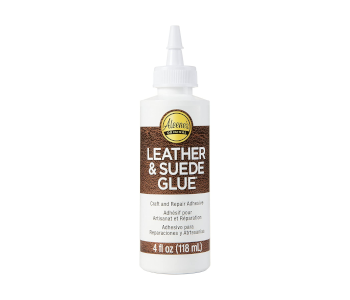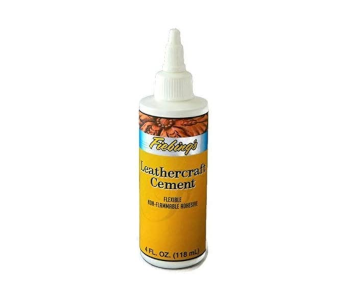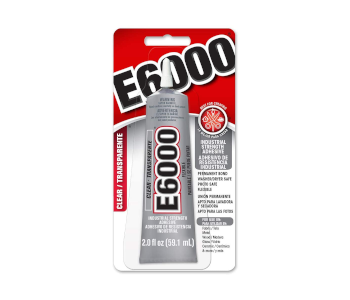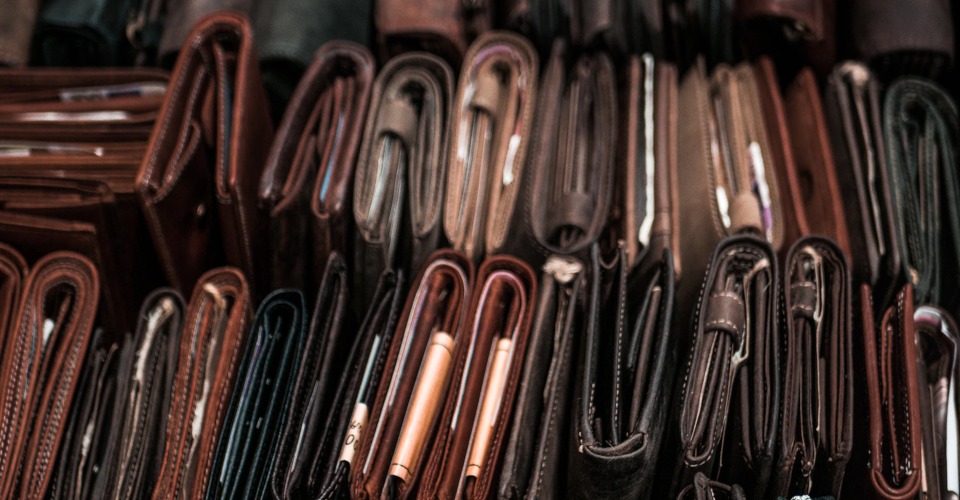The Top 5 Best Glue for Leather
If you own a leather purse or jacket, then you’re probably very careful about how, when, and where you use it. Whether it’s a jacket or a purse, leather is still considered one of the most luxurious materials and is valued because of its toughness, moisture protection, and visual appeal.
The ability to work with leather is a highly valued artisanal craft not only because leather is so expensive, but also because leather can be a tricky material to handle. In this article, we take a look at the best adhesive options that have proven to be effective in gluing together pieces of leather or leather to other materials.
Why won’t standard glue work with leather?
Glue is an essential tool for anyone working with leather. Whether as a standalone means of putting pieces of leather together or as a preparatory step before sewing, gluing leather is simply one of the many steps that a craftsman will take to prepare their artisanal leather goods.
You may ask – is it really necessary to use a special glue for bonding with leather? Won’t standard white glue work? While standard glue may work to some degree, they are not the best option. Leather has a few unique qualities that make bonding with standard glue difficult.
Leather has two surfaces – the flesh side and the skin side. In most cases, the glue will be applied to the flesh side so that the smoother skin side will be visible. However, applying glue to either of the two surfaces is still a challenge. The flesh side tends to soak up any liquid substance, including adhesives.
Applying glue on the skin side, although uncommon, is equally problematic. Most standard adhesives run into problems when applied to very smooth surfaces. A quick remedy to this is to take a piece of sandpaper and rub it on the surface of the leather, creating a rough patch for the glue to stick onto. However, this runs the risk of sanding beyond the area of glue application, thus potentially ruining the aesthetics of the finished product.
The adhesive used in glue must also be flexible enough to withstand the regular use of leather products. Adhesives that dry to form a rigid layer are very incompatible with the flexible nature of leather and will likely fall apart quickly.
Due to these considerations, specialty glue is recommended when working with leather. A good leather glue is flexible, expands during curing, can withstand exposure to moisture, and does not easily fall apart due to mechanical movement.
Top 5 best glue for leather
1. Aleene’s Leather and Suede Glue

If you need to make quick fixes to your leather shoes, bags, or couch, then this small bottle of leather and suede glue from Aleene’s should be an inexpensive option. A quick-drying glue, Aleene’s provides a flexible seal for your leather goods which does not soak through the leather material. It’s a non-toxic adhesive that emits little odor and leaves an almost clear residue.
What makes this glue a very useful tool for fixing leather goods is the fact that it can be carried around and dries in just a few minutes. It doesn’t require a curing time of half an hour, which you simply might not have time for if your shoe breaks during the middle of a day. We also like how the glue can be used with suede as well, giving a little bit of flexibility to your arsenal of quick-fix adhesives.
The Aleene’s leather and suede glue has one major flaw – it doesn’t stand up well to moisture. If you’re using this to fix parts of your shoes that have come off or a layer of leather peeling off your purse, then it would be best to treat it as a temporary fix. If you need an adhesive that can better withstand the elements, you may have to look elsewhere.
2. Fiebing’s Leathercraft Cement

For more permanent fixes, the Leathercraft Cement from Fiebing’s should be a good option. This quick-drying is advertised as cement and truly lives up to the expectations of high-strength bonding. The adhesive is water-based and does not give off any toxic fumes.
Belying its name, this leather cement actually makes for a pretty good all-around glue. It’s excellent for gluing patches to leather jackets, especially if you can’t be bothered to stitch them on. The glue also works great for pleather, suede, and a variety of other fabrics. On drying, the glue leaves a layer that is flexible but strong enough to last for several months, even with sustained movement.
The biggest downside of this leather cement is that it does not dry quite as quickly as other leather glues. This isn’t suitable for quick fixes – you’ll have to be a bit more patient with it.
3. Tandy Leather Eco-Flo Leather Weld Adhesive

In terms of sheer strength, this leather weld adhesive by Tandy Leather is considered one of the best leather glues. This is the kind of leather glue you need if you’re crafting with leather or making heavy-duty repairs to leather shoes, bags, and jackets. Bonds made using the Tandy Leather adhesive will last for years and can withstand repeated exposure to moisture.
What makes this leather adhesive even more useful is the fact that it works well in bonding leather to other materials. If you need to glue leather to metal, wood, or other fabrics, then this adhesive is one of the more reliable options.
Despite being more expensive and a little less common than other brands, this leather glue by Tandy Leather is easily one of the best adhesives designed specifically for leather. If it’s reliability you’re after, then it’s worth the effort to hunt down this leather glue.
4. E6000 Industrial Strength Craft Adhesive

We’ve already gone through a pretty solid list of three brands of leather glue, each one of which performs great when bonding leather pieces or leather with other materials. However, leather glue is still decidedly a one-note tool which may not be useful for other types of repair and craftwork.
This craft adhesive from E6000 is a more all-around tool, similar to standard super glue. However, the E600 heavy-duty adhesive has been proven to work well with leather. This is likely because of the highly viscous nature of this adhesive that resists getting absorbed into a piece of leather’s skin side.
In addition to working well with leather, the E600 adhesive was designed to glue other types of fabric, wood, metal, glass, and ceramic. The resulting adhesive layer has industrial-grade strength, remains flexible, has good moisture resistance, and remains stable in extreme temperatures. No matter the circumstance, the E6000 craft adhesive is one of the more reliable adhesives if you work with glue alongside an array of other materials.
5. Loctite Ultra Gel Control Super Glue

Loctite may not be the brand you would instantly think of when shopping for a specialty leather glue, but they have a product that works really well. The Ultra Gel Control glue is thick enough to keep from getting absorbed into leather but is also compatible with a wide range of materials.
As you can expect from the Loctite brand, this specialty super glue creates a very strong bond. Moreover, this is one of the most durable glues created by Loctite with its rubber-toughened formulation. Not only is the resulting bond strong but it is also moisture-resistant, shock-resistant, and can withstand substantial impacts.
Loctite’s patented applicator provides excellent control in applying the glue, especially if you’re working with small parts. If you do leather crafts, this is an advantage you will certainly appreciate.
Again, the Loctite super glue is a great option if you’d rather buy an adhesive that has all-around applications. As one of the more well-known adhesive brands, you’re sure to get your money’s worth with Loctite.
Final thoughts
As one of the more premium materials for shoes, bags, purses, and wallets, leather is the kind of thing that you will want to repair if it gets damaged. Similarly, the ability to work with leather and make leather crafts is also highly valued. In either case, you need to have the right tools for the job – a proper leather glue is a good place to start.
No matter which of the adhesives we have listed here you end up trying, remember to do the usual proper practice for applying adhesives. Clean the area, apply the adhesive in thin and even layers, and clamp the area securely while the glue dries. Leather may be tricky to work with, but the results are well worth the effort.

